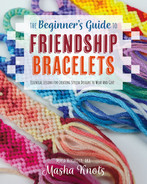
CHAPTER 2String Types
I want to start this chapter off by saying that you don’t have to use the same materials as me, or anyone else, to create beautiful bracelets. Looking at other people’s creations, while often inspiring, can sometimes be discouraging if you compare your work to theirs. It may seem like the one thing you’re missing in order to create bracelets just like theirs is the specific material they used. This is not true! Comparing yourself to others rarely does you any good because the reality is that people learn at different rates, and they create and knot in different ways. If you give 10 knotters identical materials and patterns, you will have 10 unique bracelets as a result. The materials, or even the specific brands someone uses, has little to do with the result they achieve, and you absolutely can make beautiful bracelets with a limited string collection. This chapter is intended as an overview of what materials are out there to help you get an idea of how you could potentially expand your collection down the line when you are ready for more variety and creativity. Try not to get overwhelmed and start by using the strings and other materials that are readily available to you.
There are many types of string you can use. Most people use embroidery floss, which is what I will be using throughout this book and what I would recommend a beginner to use, but you can also use special craft thread or even yarn. Let’s go over the differences between these string types and take a look at some variations.
EMBROIDERY FLOSS
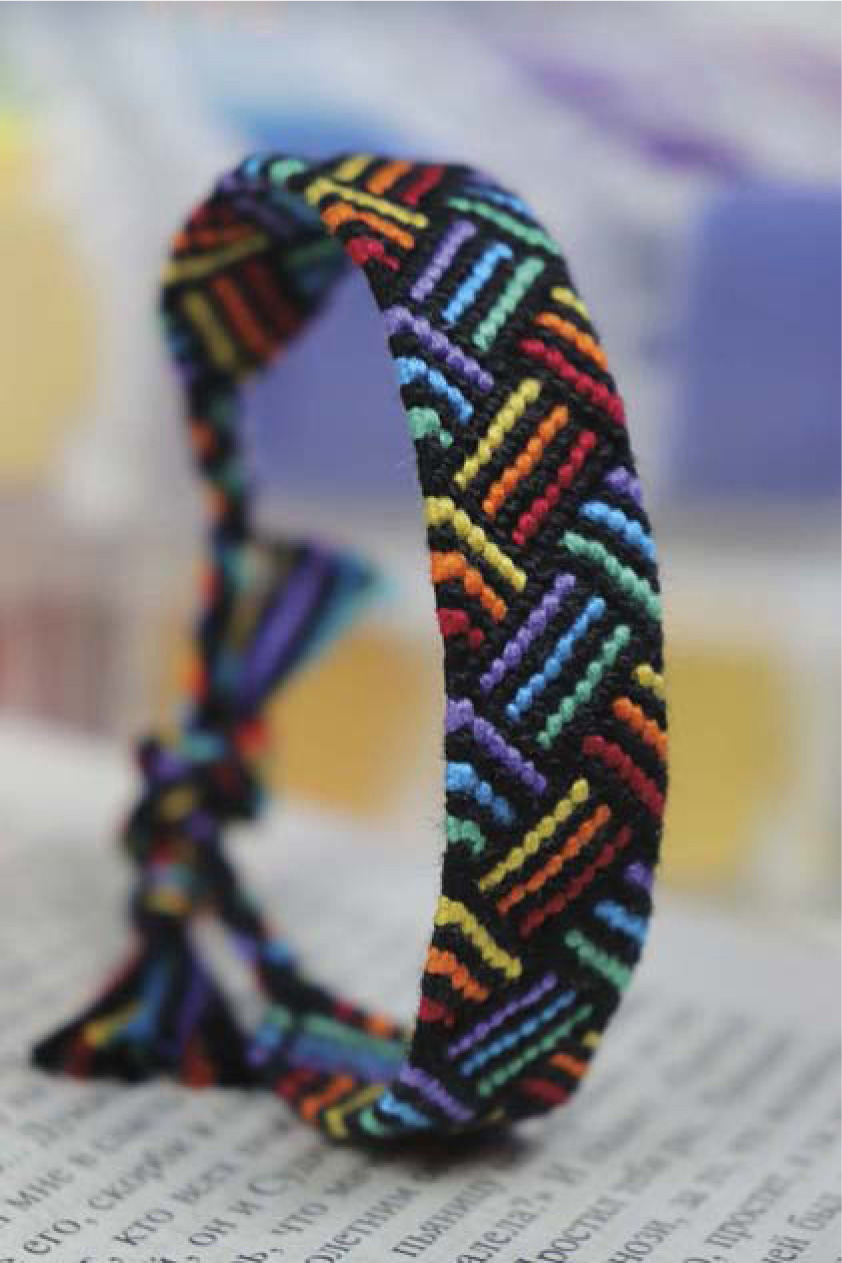
Embroidery floss is the most used material for friendship bracelet making. It typically consists of six individual strands that are loosely twisted into a single thread, but unlike in embroidery or cross stitch, you rarely need to separate the individual strands in bracelet making. Embroidery floss is most commonly made of 100% cotton, and this is one of the reasons people prefer using it to other types of string.
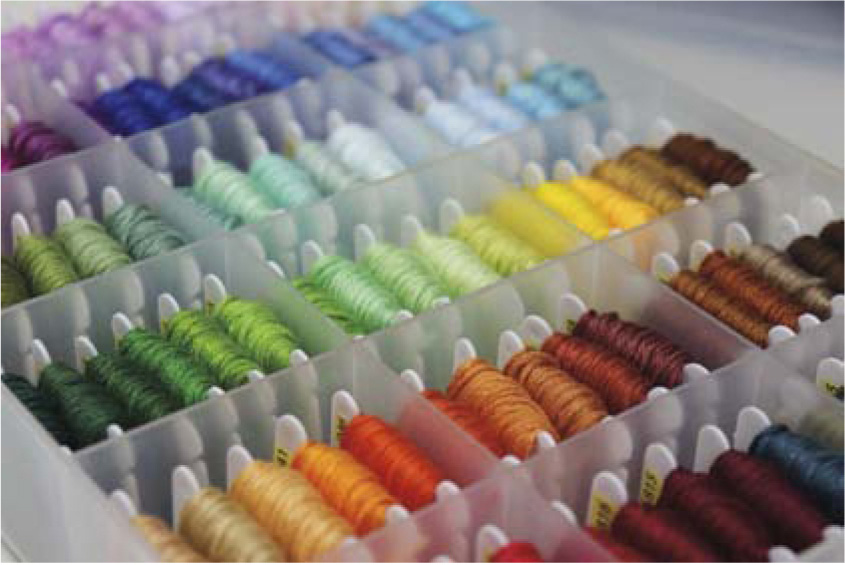
CRAFT THREAD
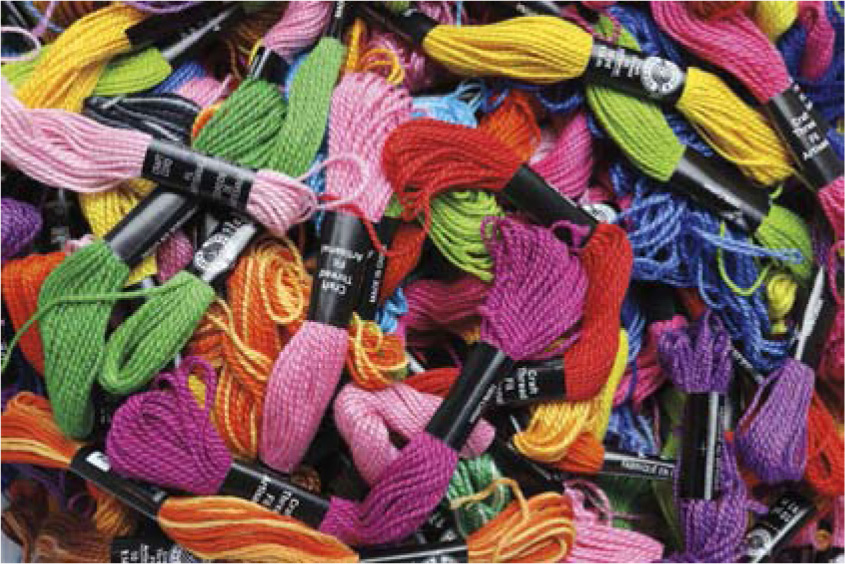
Craft thread is a less common material, though it can be very useful for making friendship bracelets. Craft thread is similar to embroidery floss in width and in the fact that it also consists of several small strands of string braided together. However, the main difference is that craft thread does not separate and fray as easily as embroidery floss. This is one of the main reasons some people prefer using craft thread. Because it doesn’t fray, it is a great material for beginners, plus it is commonly sold in large packs containing a variety of colors. The main downside to craft thread, however, is that it isn’t as widely available and can be harder to find than regular embroidery floss. Another downside is that there tends to be a limited range of colors. While there are definitely enough colors for a beginner—in fact, I used my craft thread collection exclusively for more than five years—once you become more familiar with the craft you might desire a wider range of color options. Overall, craft thread is a great material to use, and I recommend it for beginners.
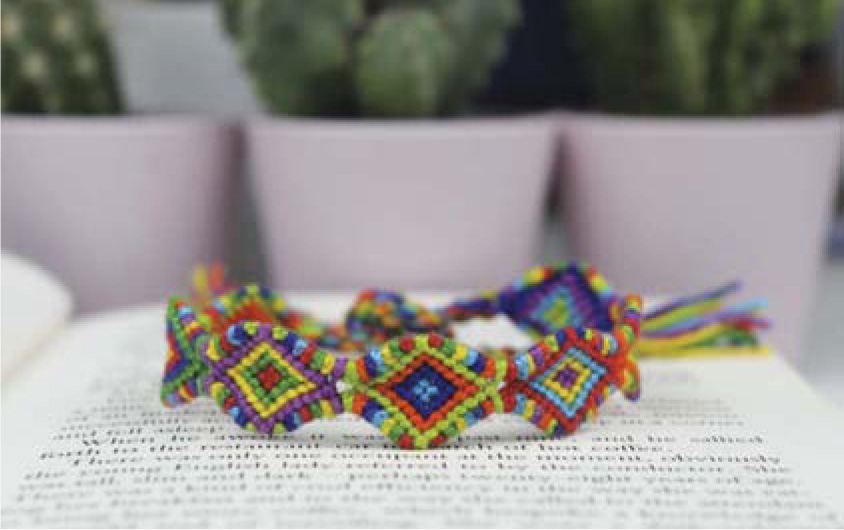
YARN AND CROCHET THREAD
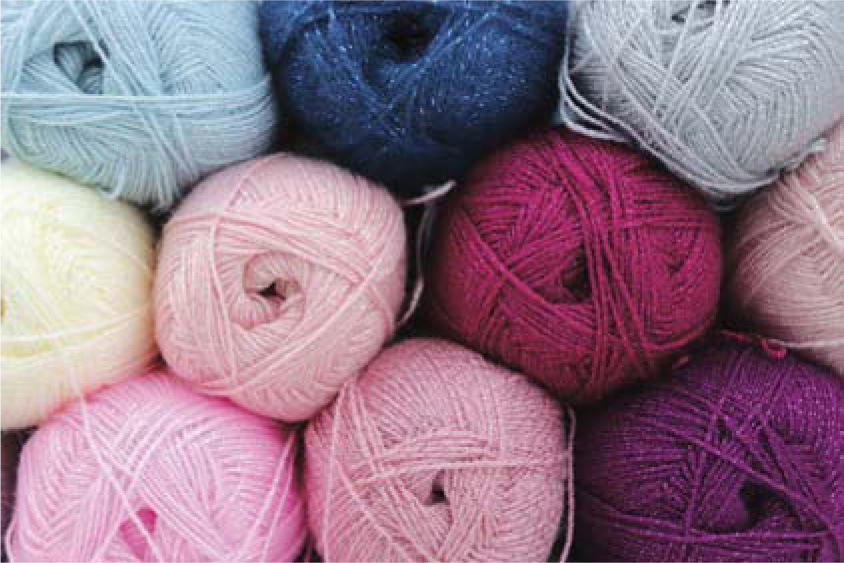
Some yarns and crochet threads can also be used for friendship bracelet making. The main benefit of using these materials is the length at which they are typically sold. A typical skein of embroidery floss or craft thread is eight meters long whereas yarns or crochet threads can be hundreds of meters in length. However, the downside of these materials is simply the fact that they weren’t created with friendship bracelet making in mind. They are designed for different purposes; most yarns are either too thick or too fluffy for friendship bracelets, and most crochet threads are too thin and some too slippery to work with comfortably. Due to the differences in elasticity and sizes, the knots produced by these materials will also vary in size. This can create problems when knotting bracelets as keeping your knots roughly the same size helps balance the bracelet and ensures that the pattern is correctly represented. There are, of course, both yarns and crochet threads that can work perfectly for friendship bracelets, but they can be quite hard to find. Also, the initial appearance of a type of yarn can be deceiving, and only through trial and error can you figure out which brand fits your needs.
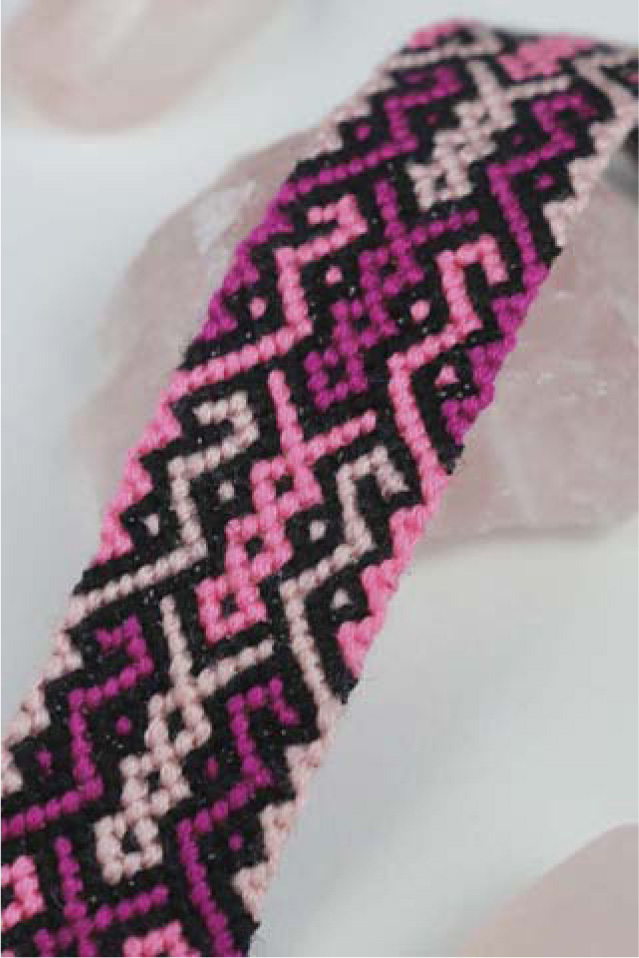
Finding yarn or crochet thread that works for you can be extremely rewarding. The ability to use as much of it as you desire without having to worry about it quickly running out is freeing. Additionally, yarns and crochet threads tend to be the materials that have the most variety when it comes to special string, which we will discuss next.
SPECIAL STRINGS
Special strings can be loosely defined as strings that aren’t made of a basic material or a solid color. The most common special string types are metallics, sparkly strings, and multicolored strings.
METALLIC STRINGS
Metallic strings are typically made from polyester and are very sparkly. Most commonly, this string is made as a variation of embroidery floss, though there are metallic yarns and crochet threads too. The main benefit is, of course, the beautiful sparkle and shine it adds to your bracelets. The downside, however, is the fact that it is rather difficult to work with. Due to the materials it is made from, metallic string tends to be very slippery, which makes knots it creates prone to unknotting no matter how hard you tie them. Additionally, again due to its slipperiness, the individual strands making up the metallic thread tend to separate rather easily, which makes working with it challenging as it acts more like six tiny strings rather than a single string. The knots that metallic strings produce are often larger than knots made from regular embroidery floss, which makes pairing it with other strings within a bracelet difficult as the bracelet becomes unbalanced with knots that differ in size.
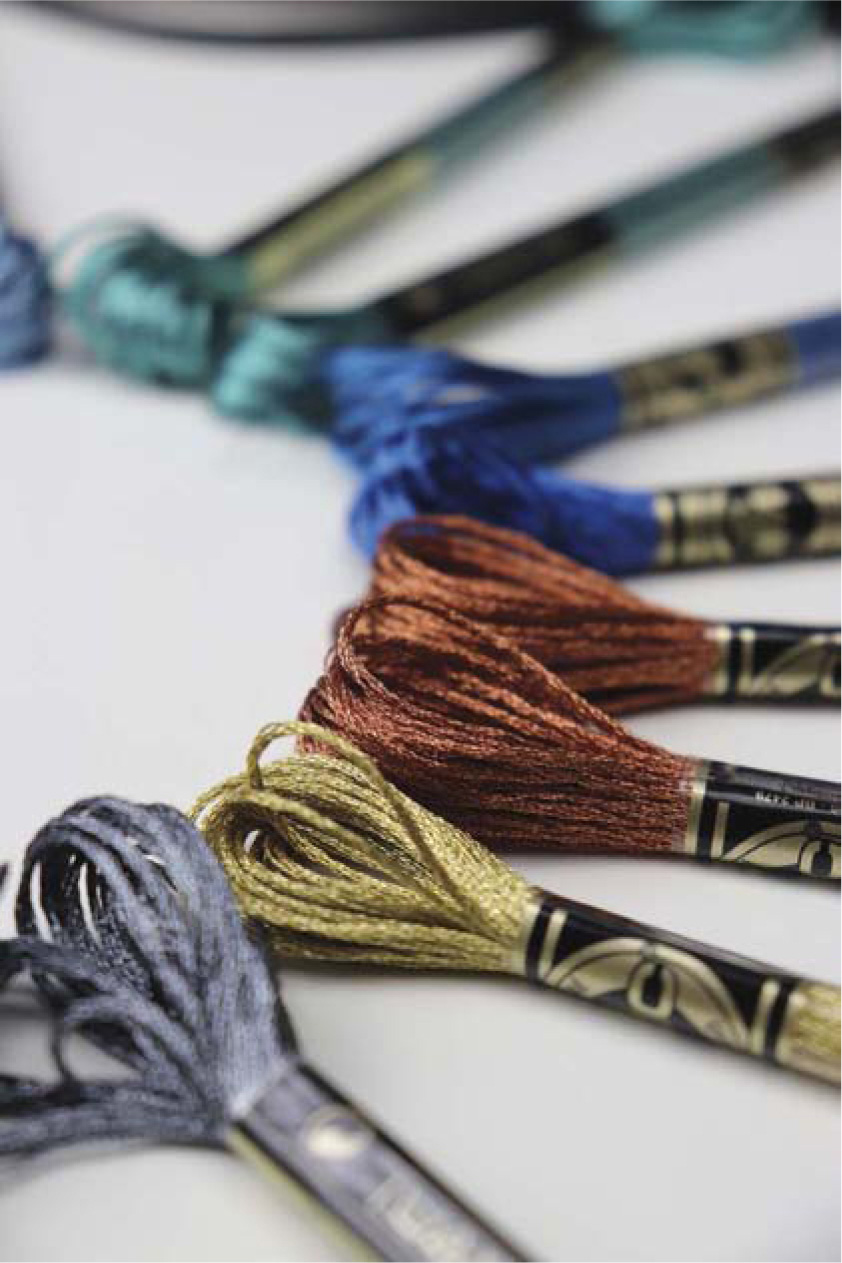
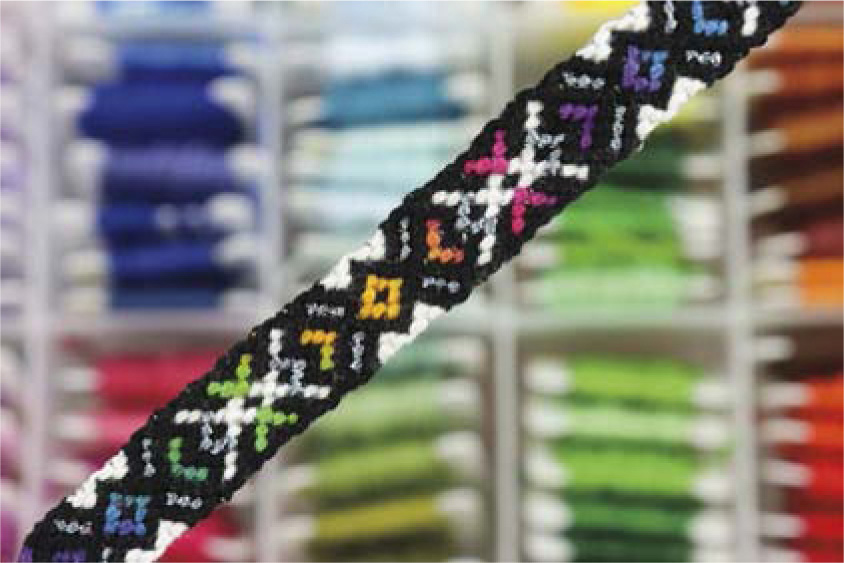
SPARKLY STRINGS
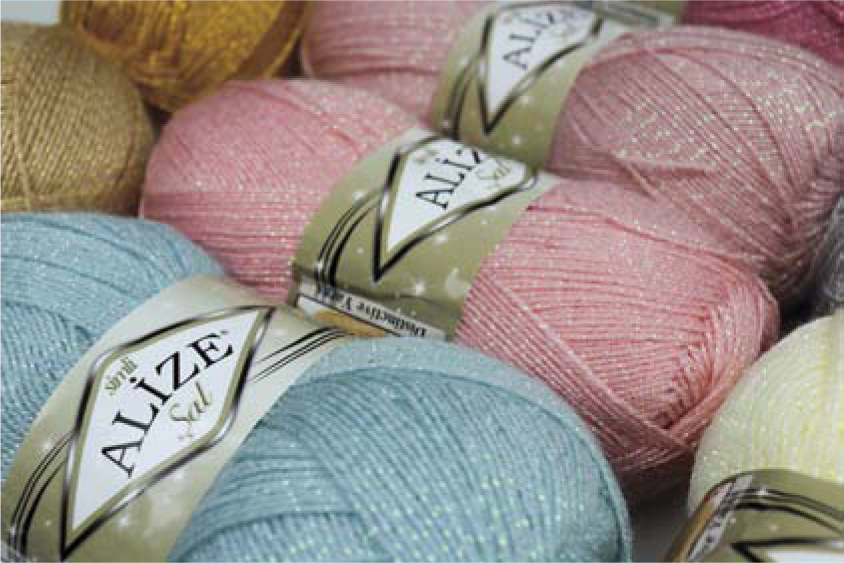
Sparkly string is similar to metallic string as it also sparkles. However, metallic string is sparkly in its entirety whereas sparkly string tends to have a sparkly filament wound over string of a solid color. When used within a bracelet, unlike metallic string, which produces a bright sparkle in every knot, sparkly string is more varied and unpredictable, sprinkling in the sparkles every so often. Sparkly string is most commonly found as yarn or crochet thread, though there are some brands of embroidery floss that have sparkly options. Depending on the type of string you buy, the knot sizes produced by it might differ, but there are plenty of strings out there that are perfect for bracelet making. The downside of using sparkly thread is that it cannot be 100% cotton due to the sparkly filament. Another downside is that the sparkly filament easily separates at the ends from the rest of the string. Despite the downsides, sparkly string is a personal favorite of mine and I love finding creative ways to use it within a bracelet.
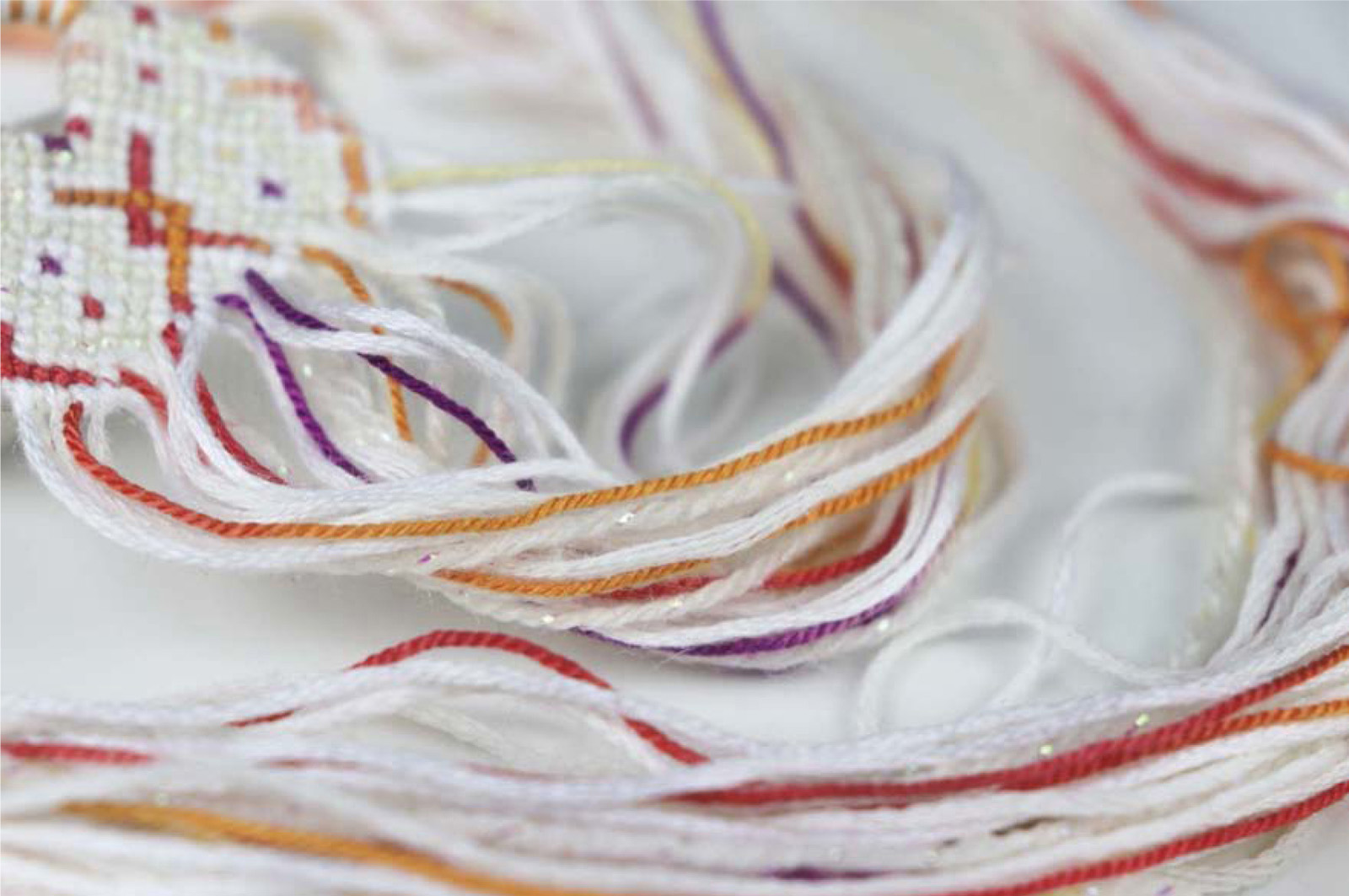
MULTICOLORED STRING
Multicolored string comes as embroidery floss, craft thread, yarn, crochet thread, or really any other kind of material you can think of to use in your friendship bracelets. Multicolored string is probably the most common type of special string you will find, and it is also arguably the most versatile. This string type has several subtypes based on color palettes. Monochrome multicolored strings fade from one shade of a color to another shade of that same color within the strand. Gradient multicolored strings blend several colors that are close to each other on the color wheel to create a beautiful gradient. Other color palettes also exist, seamlessly blending a vast variety of color combinations. My favorite is rainbow multicolored thread, though from personal experience this is the most difficult variety to find. Multicolored thread holds the characteristics of whatever material it is made of.

